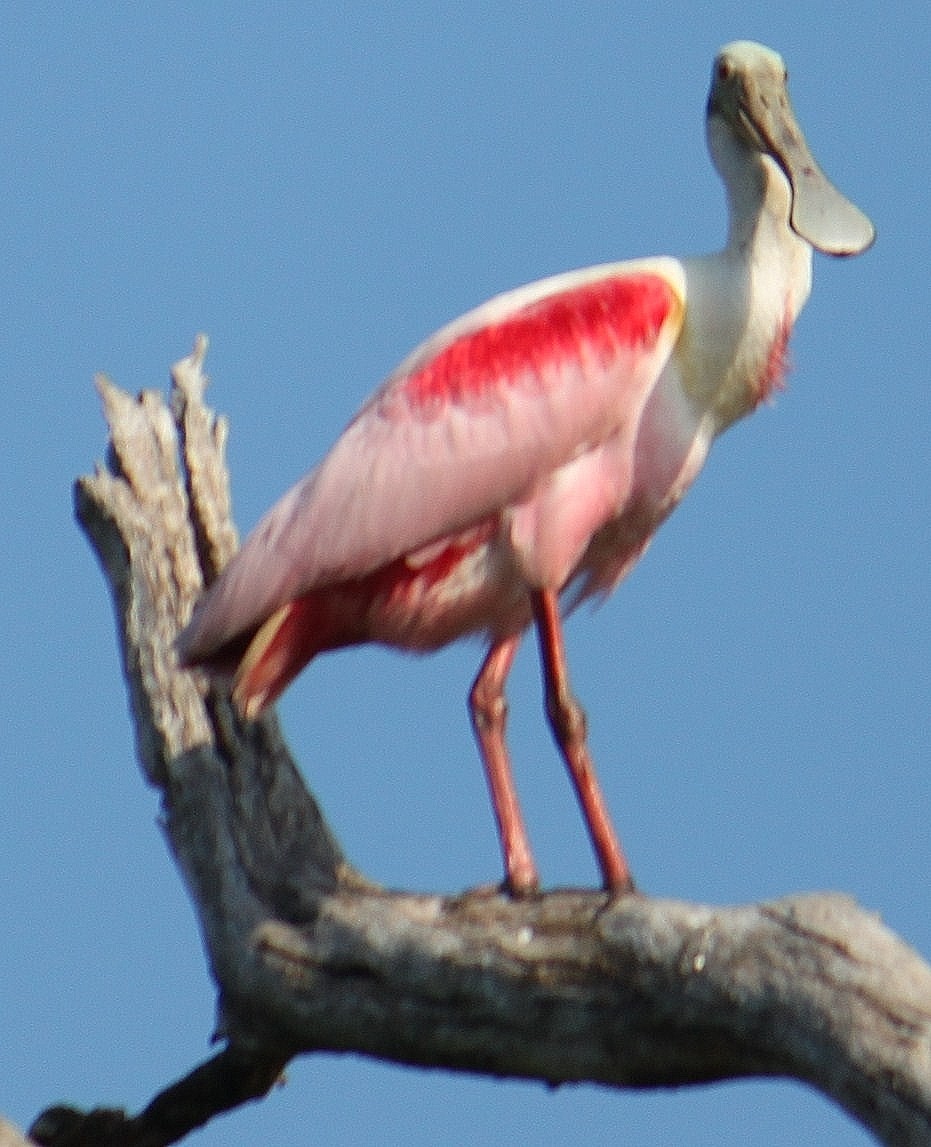Roseate Spoonbill
A species of Spoonbills Scientific name : Platalea ajaja Genus : Spoonbills
Roseate Spoonbill, A species of Spoonbills
Botanical name: Platalea ajaja
Genus: Spoonbills
Content
Description People often ask General Info
 Photo By MathewTownsend , used under CC-BY-SA-3.0 /Cropped and compressed from original
Photo By MathewTownsend , used under CC-BY-SA-3.0 /Cropped and compressed from original Description
Its legs, bill, neck and spatulate bill all appear elongated. Adults have a bare greenish head ("golden buff" when breeding) and a white neck, back and breast (with a tuft of pink feathers in the center when breeding), and are otherwise a deep pink. The bill is grey. There is no significant sexual dimorphism. Like the American flamingo, their pink color is diet-derived, consisting of the carotenoid pigment canthaxanthin. 
Size
76 - 102 cm
Life Expectancy
10 years
Nest Placement
Tree
Clutch Size
1 - 5 eggs
Incubation Period
1 brood
Number of Broods
22 days
Nestling Period
35 - 42 days
Feeding Habits
Roseate Spoonbill forages in shallow waters, sweeping its spoon-shaped bill to locate prey like crustaceans, small fish, and aquatic insects. Prey is detected by touch, snapped up, and usually swallowed whole.
Habitat
Roseate Spoonbill thrive in coastal wetlands including marshes, mudflats, and mangroves, primarily at low altitudes within subtropical to tropical zones. They seek habitats where fresh, brackish, and salt waters mix, supplying an abundance of aquatic invertebrates. For nesting, they prefer woody vegetation near water, adapting to both natural and altered landscapes.
Nest Behavior
Roseate Spoonbill builds nests in shaded areas within colonies, with the males gathering materials. Their egg-laying and chick-rearing patterns involve cooperative care from both parents.
Nest Characteristics
Roseate Spoonbill's nests are often located in colonies up to 16 feet high in trees or shrubs such as mangroves and willows, over water. They comprise a bulky platform of sticks lined with moss and bark, typically 22 inches wide and 4.5 inches deep.
Dite type
Aquatic invertebrate eater
People often ask
General Info
Feeding Habits
Bird food type
Behavior
Roseate Spoonbill exhibit a blend of both unique and communal behaviors, key among them their distinctive feeding technique. By wading through shallow waters, they use their spoon-shaped bills to sift for prey, a trait emblematic of their species. Roseate Spoonbill's rest involves standing often on a single leg, with their head elegantly retracted under a wing. Social interaction is evident in their habit of congregating in varied-sized flocks, ranging from a handful to hundreds during feeding and resting periods. In flight, roseate Spoonbill are identifiable by their methodical wingbeats and outstretched necks and legs. A peculiar behavior known as 'sky gazing' is observed when roseate Spoonbill in foraging grounds extend their necks skyward upon sighting others overhead. At their communal roosting sites, cohabitation with species like egrets and ibises is common, and during breeding seasons, males engage in a conspicuous display of head bobbing and twig shaking to attract mates, with pairs typically forming on a seasonal basis.
Species Status
Information about predation on adults is lacking. Nestlings are sometimes killed by turkey vultures, bald eagles, raccoons and fire ants. In 2006, a 16-year-old banded bird was discovered, making it the oldest known wild individual. 
Scientific Classification
Phylum
Chordates Class
Birds Order
Pelicans and Relatives Family
Ibises and spoonbills Genus
Spoonbills Species
Roseate Spoonbill